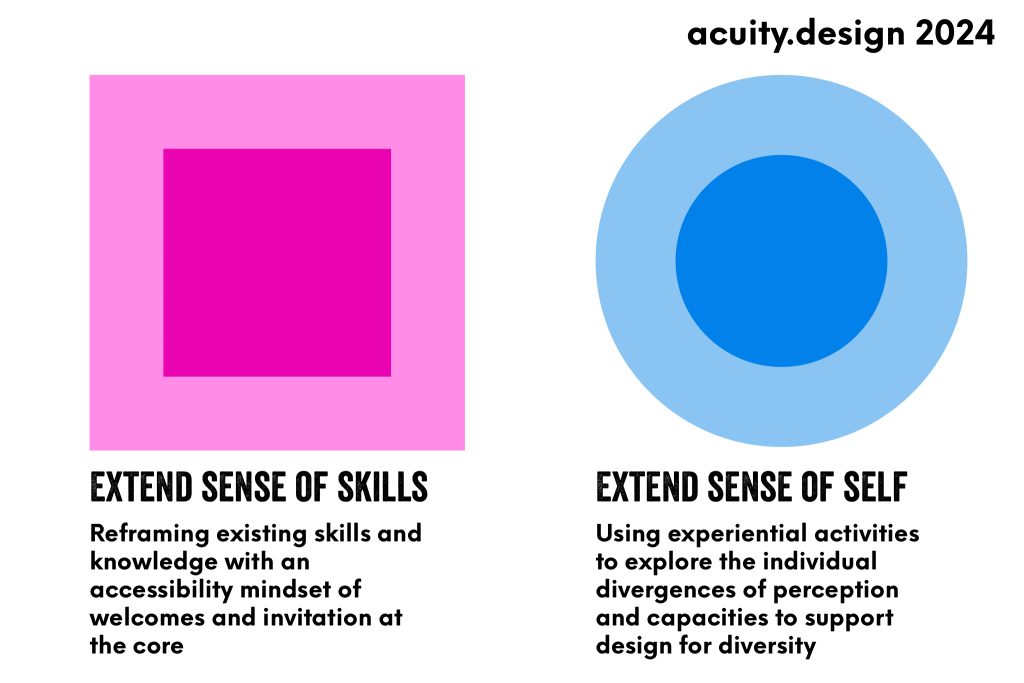The European Accessibility Act (EAA) comes into force at the end of June 2025. What I hope for is that it does not get trapped by the idea that accessibility in design, products and service is about standards that can be managed thru checklists. This trap has led to many years of ‘technically’ accessible but actually unusable websites and products.
What is better is to humanise accessibility. Rather than specifying for impairments, invite disabled people into processes (as employees, as codesigners, as usability experts). The standards/checklist model made people irrelevant: you could comply using automated tools, you could be user centered without meeting a user. This model of accessible design needs to go.
What I am looking at is two workshops that draw off my project experiences of the last few years. Less about technologies and standards, more about people and diversity.

Extend Sense of Skills
Reframing existing skills and knowledge with an accessibility mindset of welcomes and invitation at the core
As an online or in-person workshop, this theme is about building confidence in what people already know and expanding their sense of they do as being accessibility already. This is an approach I use at project kickoffs to put ideas like Service Design and Content Design within accessibility. I spoke about this at 2024’s Accessibility Scotland conference as ‘Accessibility and…’. Framing all design and product management as being accessibility and putting the skills and methods people already feel comfortable and capable with inside of accessibility.
For example, the idea of Chunking in content design is very useful in accessibility. Breaking apart user stories and content into smaller blocks makes it easier to switch formats for differing physical and cognitive capactities. The idea of user journeys from service design is useful in accessibility when framed as inviting and welcoming more people from more places to use products and services. This is especially important when people realise that many accessibility problems are due to disabled people never using the product or service at all. They do not feel invited, they do not feel welcome. This is exclusion at the heart of design: caused by people with disabilities not being part of design teams and not being part of testing panels.
This workshop is about extending peoples’ sense of their relevance to the accessible design process and making them explicitly aware of the need to extend their working partnerships with more people with a greater range of personal physical and cognitive capacities. Inviting and welcoming diversity as a fundamental way in which to implement the EAA.
Extend Sense of Self
Using experiential activities to explore the individual divergences of perception and capacities to support design for diversity
This is latest version of my oldest and most successful workshop ‘Designing for human perception’. This is a workshop that uses action intuition to explore user centered design and accessibility from a personal sense of divergence and difference. Another trap for designers is the idea of Normal and of Edge Users. The idea that there is standard way of being human, in physical and cognitive terms. The idea that anyone who diverges from that standard is ‘over there’, on the edge. This is neither true nor helpful. As individuals we diverge in our capacities and as groups we are diverse in our capabilities.
To explore the idea of divergence and diversity, I find destabilising the indvidual sense of self is a way of accessing a broader sense of what we are all capable of. Using experiential activities plus research to become aware of how we all differ and how we can all work together on designs that work more flexibly for more people.
Contact Me
Contact me to have a chat about these workshops for your organisation or conference.